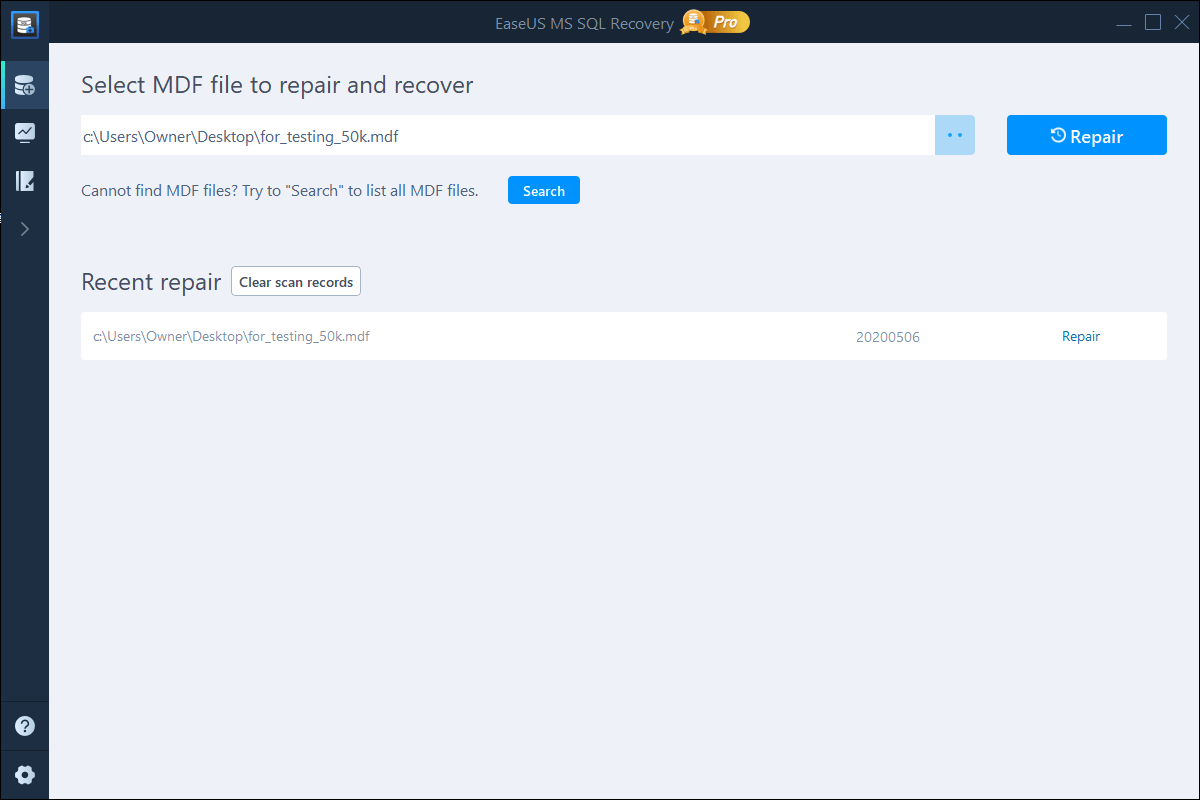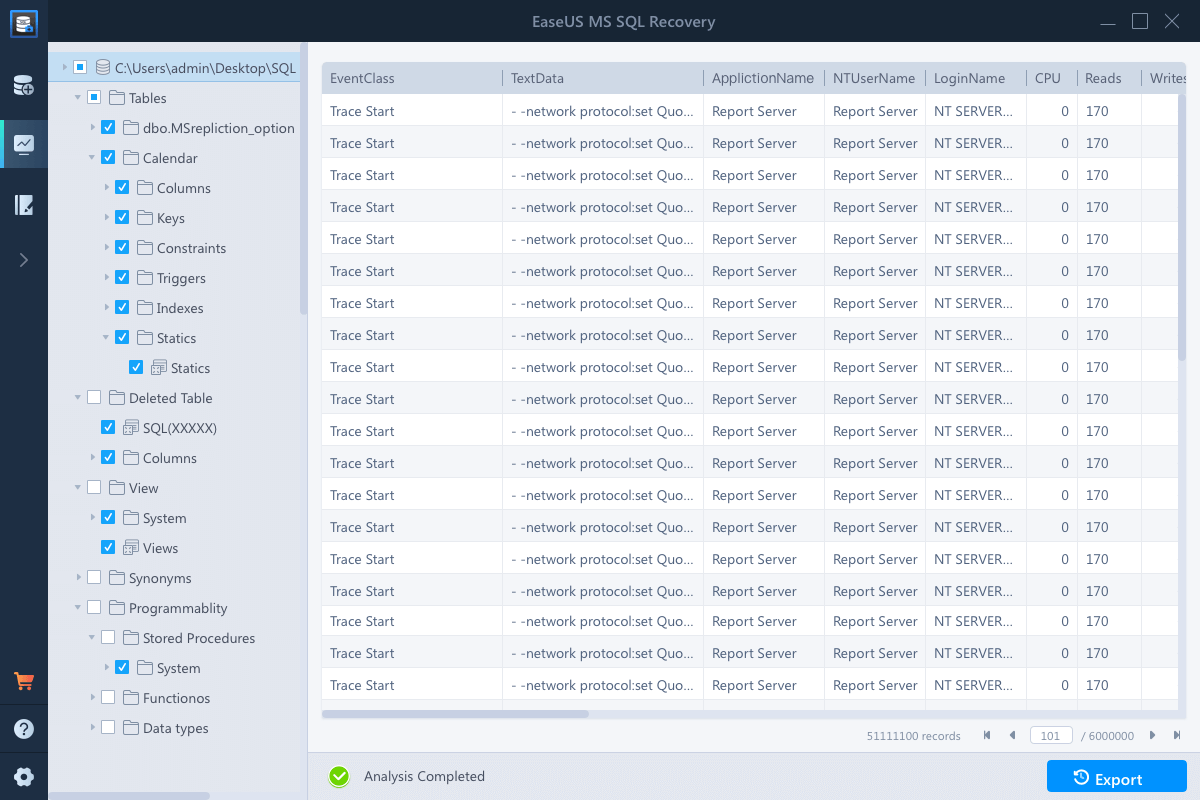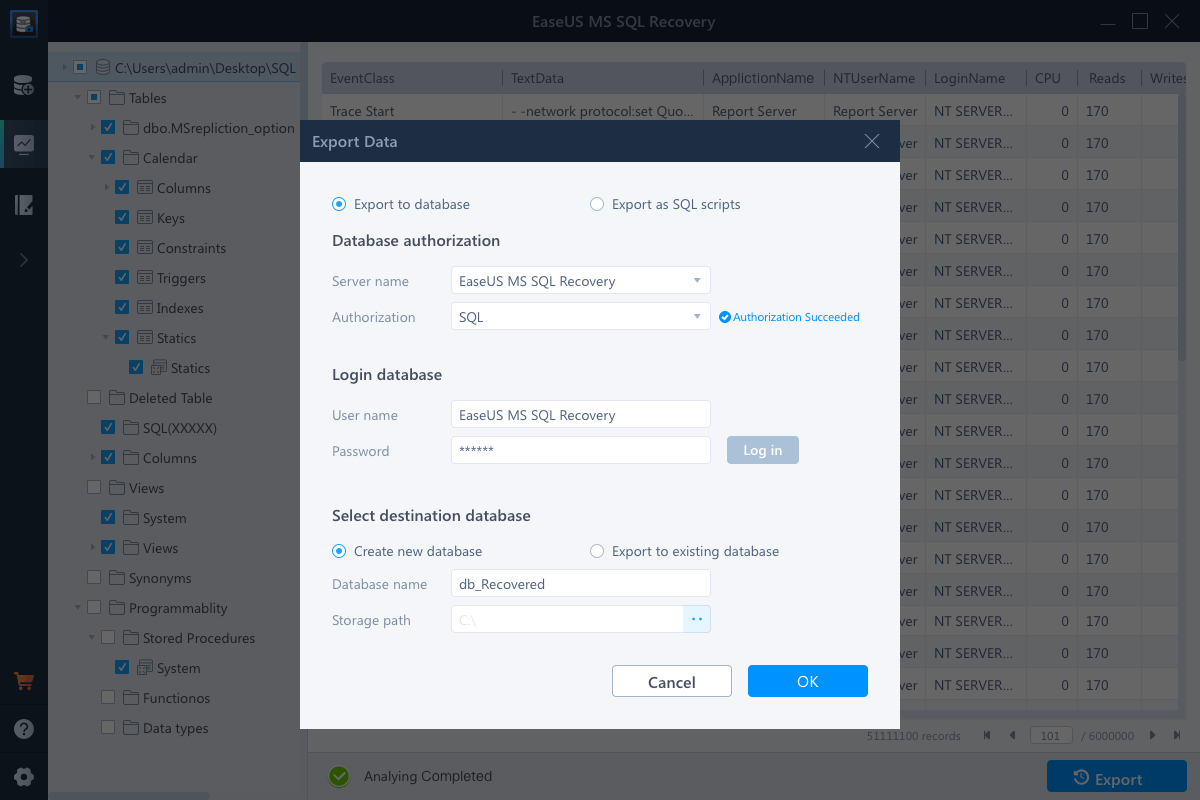Overview - SQL Database Recovery Pending Access Denied
It was said that quite a large number of Microsoft SQL server users and database administrators were caught up in the seemingly dreadful "Recovery Pending" status once or twice. Recovery pending, as a matter of fact, is not always occurring to bring trouble unless you received the final warning, such as access denied in the end. What is recovery pending? What is access denied? What do you least expect from SQL database recovery pending access denied?
To relief you a little, the recovery pending is one of the three common SQL database recovery states. This state hints an interruption while starting the database recovery, and it's not supposed to fail for sure. It's just not started yet. The recovery pending is different from the other two states: Online and Suspect.
However, when your SQL server hangs for a while in the recovery pending state and returns the access denied error in succession. the problem arises. You must head to remove the access denied error so as to grant the ability to access the database, as normal.
How to Manually Fix SQL Database Recovery Pending Access Denied
Regarding the root cause of the access denied error, it's because you don't have the proper permission to access, write or save data on the SQL server. To compensate for the lack of permission, you got two methods to mend the error.
Method 1. Modify the permission settings
- On your SQL server computer, locate the folder with .mdf extension.
- Right-click on the MDF file and choose "Properties".
- Switch to the Security tab and click the "Edit" button.
- On the popup window, under the "Group or user names" section, choose "Authentic Users".
- Downwards in the "Permissions for Authentic Users", click the checkbox of "Full control". The following permission options will be selected automatically along with the "Full control".
Method 2. Change server authentication mode from SQL Server to Windows
- In SQL Server Management Studio Object Explorer, right-click the server, and then click Properties.
- On the Security page, under Server authentication, select the new server authentication mode, and then click OK.
- In the SQL Server Management Studio dialog box, click OK to acknowledge the requirement to restart SQL Server.
- In Object Explorer, right-click your server, and then click Restart. If SQL Server Agent is running, it must also be restarted.
How to Automatically Fix SQL Database Recovery Pending Access Denied
If you decided to give up manual procedures, or it's simply because the manual methods did not work after an actual test, you can now move on to a third-party automatic troubleshooting solution.
EaseUS MS SQL Recovery could be your first-and-last option to take care of a malfunctioning SQL server database, for it does well in handling primary SQL issues in the following:
- 1. Repair database due to corrupted MDF/NDF file
- 2. Fix corrupted transaction log files (.ldf) that result in many database errors
- 3. Recover lost, deleted and corrupted database objects: tables, indexes, triggers, keys, views, etc.
- 4. Restore other SQL error issues that the manual troubleshooting did not solve
How to restore SQL from access denied error with EaseUS MS SQL Recovery:
Step 1. Stop MS SQL Server service via services.msc or Management Studio.
Step 2. Run EaseUS SQL Recovery. In the main interface, choose the MDF/NDF file of the database you want to restore. Then click "Repair" to start repairing your MDF/NDF file.
If you know the exact location of the file, click "Browse" to locate the database.
If you don't know the file location, click "Search" to search for the .mdf or .ndf file in.

Step 3. When it has done, you will see the recovered database objects listed in the left pane of the window.

Step 4. Click "Export" in the bottom right corner of the screen to save your database objects. Choose a preferred format, MDF, or SQL scripts.
On the "Export to database" window, choose "Create new database" or "Export to existing database" to save the repaired data. If you want "Create new database", enter the database name and choose an SQL location. If you select "Exporting to existing database", you need to select the existing database.

Step 5. Now restart the SQL Server.
More tips for Windows 10/8/8.1/7 users: Check our video tutorial about how to fix access denied error in Windows via 2 fast ways.
Was This Page Helpful?
Related Articles
-
How to Rollback DROP/TRUNCATE Table in SQL Server
![author icon]() Cedric/2023-07-20
Cedric/2023-07-20 -
SQL Suspect Mode Fix | How to Recover SQL Database from Suspect Mode
![author icon]() Cedric/2023-07-20
Cedric/2023-07-20 -
How to Fix Database from MDF File in SQL Server 2008/2008 R2
![author icon]() Cedric/2023-07-20
Cedric/2023-07-20 -
How to Recover Deleted SQL Server Database without Backup
![author icon]() Tracy King/2024-01-09
Tracy King/2024-01-09
EaseUS MS SQL Recovery
- Restore (.mdf and.ndf) Files
- Recover Corrupted Objects
- Fix Database Log Files